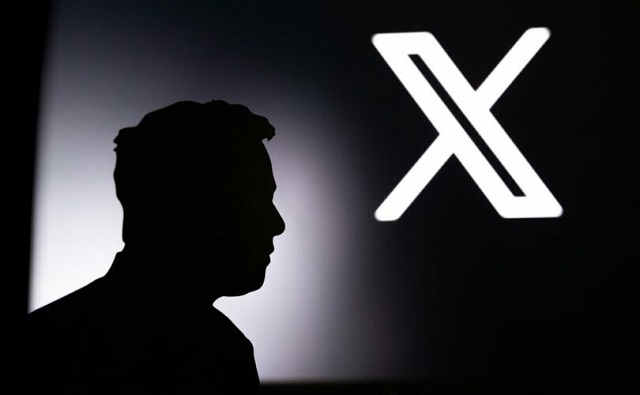International
Study shows ‘X’ suppresses conservative media despite Elon Musk’s pledge to ‘investigate’ bias

From LifeSiteNews
The Media Research Center (MRC) Free Speech America Vice President Dan Schneider believes these ‘shocking’ findings are evidence that there is ‘a radical remnant within X fighting against Elon Musk.’
A recent study shows that the social media platform X (formerly Twitter) disproportionately suppresses conservative media content and elevates left-leaning voices despite owner Elon Musk’s pledge in May to “investigate” this bias.
Media Research Center (MRC) published on Friday the results of a study into how content on X is boosted and suppressed. Remarkably, MRC found that nearly 74 percent of the right-leaning media outlets it reviewed were de-boosted, with considerably lower scores than left-leaning outlets.
By contrast, MRC found that “an overwhelming majority of the left-leaning media outlets” have “highly favorable” visibility scores.
A researcher on X known as “@The1Parzival” determined how each social media account was scored by prompting the Musk-owned AI chatbot Grok with questions that revealed how they were ranked on the “backend” of X. The resulting data, shared with MRC, showed that four metrics shape an account’s “visibility” score: “Mass Appeal” (diversity of followers), “Reputation” (purported reliability), “Toxicity” (potentially offensive content or perceived harmfulness), and “Follower” (follower retention).
Using the ratings firm AllSides’ classification of media outlets by their “perceived” ideological bias on left-to-right scale, MRC found that X gave left-leaning media outlets an average visibility score of 82.64 out of 100, while right-leaning outlets received an average score of 63.56.
This difference has powerful consequences. Grok told MRC that a score of 65 out of 100 on reputation alone, for example, is the “minimum” required for an X account to be recommended on its feed. In addition, generally speaking, the higher an account’s score is, the greater is its reach and viewership on X.
Media outlets classified as right-leaning in MRC’s review included The Washington Times, The Federalist, Fox News, The Daily Wire, Blaze Media and The Daily Caller.
The Grok-acquired data further found that “a staggering 100 percent of left-leaning media outlets are assigned favorable ‘reputation’ scores by X’s employees,” and that these leftist outlets were assigned an average toxicity score of 26.33, compared to an average 47.60 score for right-leaning media outlets (a 21-point difference).
Left-leaning accounts with low toxicity scores included The New York Times (10/100) and MSNBC (20/100), which regularly features extraordinarily divisive content, such as the claim that those who believe rights come from God are “Christian nationalists” (a derogatory term in their usage), and the claim that children do not belong to their parents, but to “whole communities.”
The MRC Free Speech America Vice President Dan Schneider believes these “shocking” findings are evidence that there is “a radical remnant within X fighting against Elon Musk.” However, it is unclear whether this is the case, given that the study comes two and half months after it was brought to Musk’s attention on X that conservative accounts are being “throttled.”
READ: UK gov’t official says people will be arrested for sharing posts that could incite ‘racial hatred’
U.S. Senator for Utah Mike Lee wrote on May 23, 2024, “How long will it take to get rid of the stage-five clingers at X—those who still periodically throttle conservatives?”
Musk replied, “Well, neither conservative [sic] nor progressives should be throttled. The point is to have an even playing field. I will investigate.”
.@elonmusk: how long will it take to get rid of the stage-five clingers at X—those who still periodically throttle conservatives? pic.twitter.com/rZ4SttCh59
— Mike Lee (@BasedMikeLee) May 24, 2024
The X CEO’s power over his platform’s algorithm is confirmed by February reports from X employees that Musk called an “all hands on deck” meeting to boost his own posts when he found that a Super Bowl tweet from Joe Biden garnered much more reach than his own.
Documents were shared with Business Insider showing that the “stated goal” of the meeting was to determine “why engagement” with Biden and Musk’s posts were different. The documents included a “snapshot of Twitter’s code that showed Musk’s tweets were being boosted.”
At the time, Platformer reported, “After his Super Bowl tweet did worse numbers than President Biden’s, Twitter’s CEO ordered major changes to the algorithm.”
Musk has repeatedly voiced a commitment to “free speech” and acknowledged the importance of Twitter/X’s adherence to this principle. He wrote on his platform in 2022, “Free speech is essential to a functioning democracy. Do you believe Twitter rigorously adheres to this principle?” He followed that up by asking: “Given that Twitter serves as the de facto public town square, failing to adhere to free speech principles fundamentally undermines democracy. What should be done?”
Business
Federal funds FROZEN after massive fraud uncovered: Trump cuts off Minnesota child care money

The Trump administration has cut off all federal child care payments to Minnesota, ordering a sweeping audit of the state’s day care system as investigators dig into what officials describe as one of the largest fraud schemes ever tied to social service programs.
“We have frozen all child care payments to the state of Minnesota,” Deputy Health and Human Services Secretary Jim O’Neill wrote Tuesday afternoon, saying the move comes after mounting evidence that taxpayer dollars were being siphoned to sham or non-operational day care centers. The freeze follows a viral investigative video that put a national spotlight on facilities across Minneapolis that were receiving large sums of public money despite appearing closed or barely functioning.
According to Alex Adams, assistant secretary at HHS’s Administration for Children and Families, Minnesota has already received roughly $185 million in federal child care funding this year alone. Those funds, the administration says, will remain locked down until the state can demonstrate that payments are being used lawfully. “Funds will be released only when states prove they are being spent legitimately,” Adams said.
We have frozen all child care payments to the state of Minnesota.
You have probably read the serious allegations that the state of Minnesota has funneled millions of taxpayer dollars to fraudulent daycares across Minnesota over the past decade.
Today we have taken three actions… pic.twitter.com/VYbyf3WGop
— Deputy Secretary Jim O'Neill (@HHS_Jim) December 30, 2025
O’Neill accused Minnesota officials of allowing abuse to fester for years, alleging the state has “funneled millions of taxpayer dollars to fraudulent daycares across Minnesota over the past decade.” To halt further losses, HHS outlined a series of immediate enforcement steps. Going forward, states seeking reimbursement through the Administration for Children and Families will be required to provide receipts or photographic proof documenting how funds are spent.
The department has also formally demanded that Gov. Tim Walz order a “comprehensive audit” of the day care centers flagged by investigators. O’Neill said the review must include attendance records, licensing documents, complaints, investigative files, and inspection reports. He pointed directly to a video published Friday by YouTuber Nick Shirley, who visited multiple Minneapolis-area centers listed as receiving millions in public funds but found locations that appeared closed or inactive.
In addition, HHS has launched a dedicated fraud hotline and email address at childcare.gov to encourage tips from parents, providers, and the public. “We have turned off the money spigot and we are finding the fraud,” O’Neill said, urging anyone with information to come forward.
Federal prosecutors say the scope of the alleged abuse is staggering. Authorities have already confirmed at least $1 billion in fraud tied to Minnesota child care programs, with 92 people charged so far. The U.S. Attorney’s Office has warned the total could ultimately reach as high as $9 billion as investigators continue combing through records.
The funding freeze marks one of the most aggressive crackdowns yet by the Trump administration on state-run social programs accused of lax oversight, sending a clear message that federal dollars will not flow until Minnesota can account for where the money went — and who was cashing in.
Business
Resurfaced Video Shows How Somali Scammers Used Day Care Centers To Scam State


From the Daily Caller News Foundation
A resurfaced 2018 video from a Minneapolis-area TV station shows how Somali scammers allegedly bilked Minnesota out of millions of dollars for services that they never provided.
Independent journalist Nick Shirley touched off a storm on social media Friday after he posted a photo of one day-care center, which displayed a banner calling it “The Greater Learing Center” on X, along with a 42-minute video that went viral showing him visiting that and other day-care centers. The surveillance video, which aired on Fox 9 in 2018 after being taken in 2015, showed parents taking kids into the center, then leaving with them minutes later, according to Fox News.
“They were billing too much, they went up to high,” Hennepin County attorney Mike Freeman told Fox 9 in 2018. “It’s hard to imagine they were serving that many people. Frankly if you’re going to cheat, cheat little, because if you cheat big, you’re going to get caught.”
Dear Readers:
As a nonprofit, we are dependent on the generosity of our readers.
Please consider making a small donation of any amount here.
Thank you!
Democratic Gov. Tim Walz of Minnesota was accused of engaging in “systemic” retaliation against whistleblowers in a Nov. 30 statement by state employees. Assistant United States Attorney Joe Thompson announced on Dec. 18 that the amount of suspected fraud in Minnesota’s Medicaid program had reached over $9 billion.
After Shirley’s video went viral, FBI Director Kash Patel announced the agency was already sending additional resources in a Sunday post on X, citing the case surrounding Feeding Our Future, which at one point accused the Minnesota government of racism during litigation over the suspension of funds after earlier allegations of fraud.
KSTP reported that the Quality Learning Center, one of the centers visited by Shirley, had 95 citations for violations from one Minnesota agency between 2019 to 2023.
President Donald Trump announced in a Nov. 21 post on Truth Social that he would end “Temporary Protected Status” for Somalis in the state in response to allegations of welfare fraud and said that the influx of refugees had “destroyed our country.”
-

 Business2 days ago
Business2 days agoDisclosures reveal Minnesota politician’s husband’s companies surged thousands-fold amid Somali fraud crisis
-

 Alberta2 days ago
Alberta2 days agoThe Canadian Energy Centre’s biggest stories of 2025
-

 Business2 days ago
Business2 days agoResurfaced Video Shows How Somali Scammers Used Day Care Centers To Scam State
-

 Business23 hours ago
Business23 hours agoThe Real Reason Canada’s Health Care System Is Failing
-

 Business2 days ago
Business2 days agoMinneapolis day care filmed empty suddenly fills with kids
-

 Business2 days ago
Business2 days agoOttawa Is Still Dodging The China Interference Threat
-

 Business22 hours ago
Business22 hours agoFederal funds FROZEN after massive fraud uncovered: Trump cuts off Minnesota child care money
-

 Opinion14 hours ago
Opinion14 hours agoGlobally, 2025 had one of the lowest annual death rates from extreme weather in history



